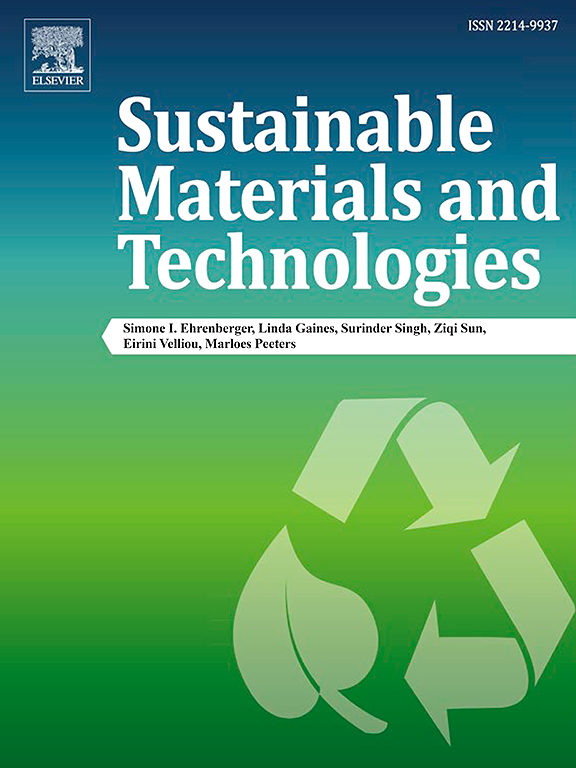An experimental demonstration on the recyclability of hybrid magnetite-humic acid nanoparticles
IF 8.6
2区 工程技术
Q1 ENERGY & FUELS
引用次数: 0
Abstract
In this study, hybrid magnet-sensitive nanoparticles made by magnetite and humic acid are primarily obtained following a co-precipitation route. Subsequently, such hybrid systems are fully recycled following a two-step process, namely: (i) calcination under air (oxidizing) atmosphere, and (ii) acid digestion to obtain an Fe(III) aqueous solution. After neutralization, hybrid magnet-sensitive nanoparticles are re-synthesized following a properly modified synthetic route analogous to the previous one. Both hybrid nanoparticles are characterized by means of different morphological, structural, physicochemical, and magnetic techniques. Additionally, these magnet-sensitive hybrids are tested in the photocatalytic abatement of paracetamol from model wastewater, investigating a photo-Fenton degradation route. Experimental results evidence a superimposable degradation profiles of both hybrid nanoparticles, with an almost complete degradation of paracetamol after 120 min of UV irradiation (with 96–98 % of abatement). These results clearly demonstrate that the recycling route here proposed is an effective approach for the virtuous recycling of these hybrid nanoparticles, and the photocatalytic tests, although preliminary, encourage on the possibility of using these magnetic systems as substrates for the sustainable abatement of recalcitrant emerging micro-contaminants in wastewater treatments.

求助全文
约1分钟内获得全文
求助全文
来源期刊

Sustainable Materials and Technologies
Energy-Renewable Energy, Sustainability and the Environment
CiteScore
13.40
自引率
4.20%
发文量
158
审稿时长
45 days
期刊介绍:
Sustainable Materials and Technologies (SM&T), an international, cross-disciplinary, fully open access journal published by Elsevier, focuses on original full-length research articles and reviews. It covers applied or fundamental science of nano-, micro-, meso-, and macro-scale aspects of materials and technologies for sustainable development. SM&T gives special attention to contributions that bridge the knowledge gap between materials and system designs.
 求助内容:
求助内容: 应助结果提醒方式:
应助结果提醒方式:


